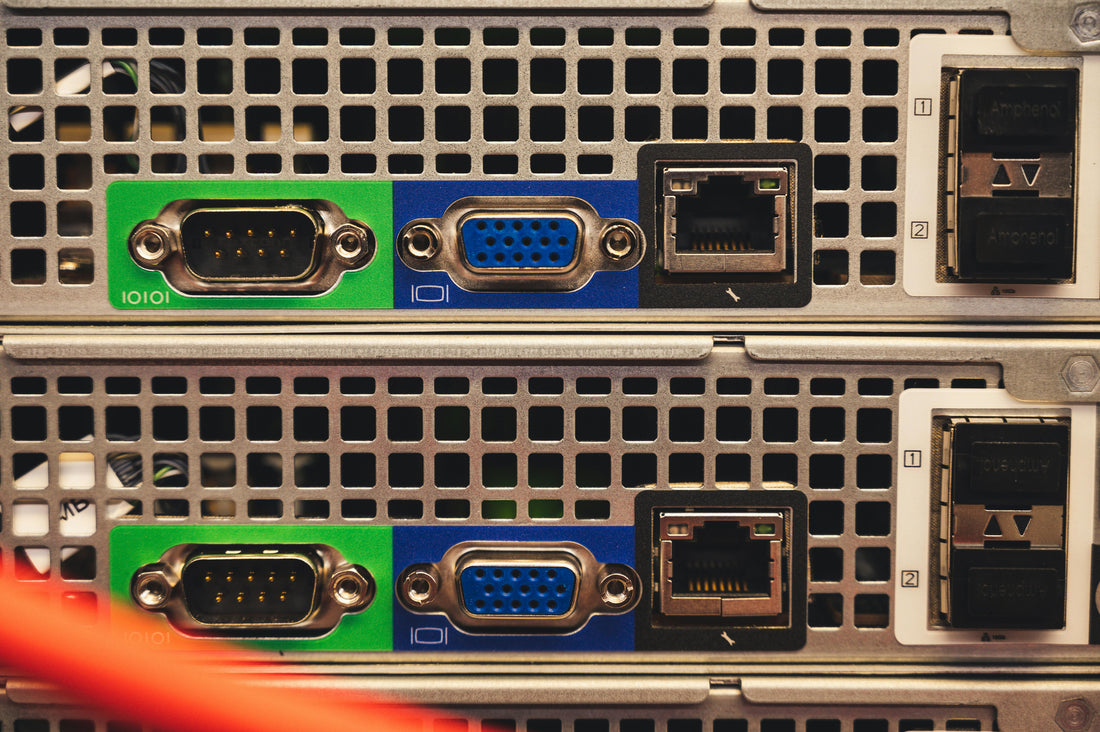
Exploring the Pros and Cons of SPI Interfaces: The Efficient Communication Link in Embedded Systems
Share
Introduction
In embedded system design, efficient communication between chips and peripherals is critical. The SPI (Serial Peripheral Interface), a classic synchronous serial communication protocol, is widely used in sensors, memory modules, displays, and more due to its high speed, flexibility, and hardware simplicity. However, its limitations—such as pin consumption and lack of standardization—require careful consideration. This article delves into SPI’s technical characteristics, ideal use cases, and future evolution.
一. The Technical Essence of SPI
1.1 Basic Architecture and Operation
SPI uses a master-slave architecture with four core signal lines for full-duplex communication:
- SCLK (Serial Clock): Clock signal generated by the master.
- MOSI (Master Out Slave In): Data line from master to slave.
- MISO (Master In Slave Out): Data line from slave to master.
- SS (Slave Select): Chip-select signal (active low) to target slaves.
1.2 Key Parameters and Modes
| Parameter | Description |
|---|---|
| Clock Polarity (CPOL) | 0: SCLK idle low; 1: SCLK idle high. |
| Clock Phase (CPHA) | 0: Data sampled on first clock edge; 1: Data sampled on second clock edge. |
| Speed | Typically 1MHz–50MHz; up to 100MHz+ in QSPI mode. |
| Data Width | Usually 8-bit, extendable to 16/32-bit. |
二. Four Core Advantages of SPI
2.1 High-Speed Performance
- Typical Speeds:
Standard SPI: 1MHz–50MHz (e.g., STM32 MCUs).
QSPI (Quad SPI): 4x speed via parallel lines (IO0-IO3), up to 200MHz.
- Comparison:
| Interface | Max Speed | Typical Use Case |
|---|---|---|
| SPI | 100MHz+ | High-speed NOR Flash |
| I2C | 3.4MHz (Fast Mode) | Sensors, EEPROMs |
| UART | 1–10Mbps | Debugging, long-distance |
2.2 Full-Duplex Real-Time Communication
- Bidirectional Transfer: MOSI/MISO work simultaneously for real-time feedback (e.g., motor control).
- Zero Protocol Overhead: Direct data transfer without addressing or ACK signals reduces latency.
2.3 Hardware Simplicity and Flexibility
- Minimal Circuitry: No pull-up resistors (vs. I2C), lowering hardware costs.
- Multi-Slave Support: Expand via multiple SS pins (requires extra GPIOs).
- Custom Protocols: Flexible packet design (e.g., CRC checks, command headers).
2.4 Broad Ecosystem Support
- Chip Integration: Built into mainstream MCUs (Arduino, ESP32, STM32).
- Peripheral Compatibility:
Memory: SD cards, NOR Flash (Winbond W25Q).
Sensors: Accelerometers (ADXL345), temp/humidity (BME280).
Displays: TFT-LCDs (ILI9341 drivers).
三. Three Key Limitations of SPI
3.1 High Pin Consumption
- Typical Setup: Each slave requires a dedicated SS pin.
4 slaves = 4 SS lines + 3 shared lines (SCLK/MOSI/MISO) = 7 GPIOs.
- vs. I2C: I2C uses 2 lines for multiple devices but sacrifices speed.
3.2 Lack of Standardization
- Data Frame Variability: Inconsistent commands/address formats across vendors.
Example: Winbond Flash uses 0x03 + 24-bit address; Micron may differ.
- No Built-In Error Handling: Requires software-level CRC/retransmission.
3.3 Distance Limitations
| Interface | Max Reliable Distance (Unboosted) | Use Case |
|---|---|---|
| SPI | <1m (on-board) | Short-range chip links |
| RS-485 | 1200m | Industrial cabling |
| CAN | 1000m (at 40kbps) | Automotive/industrial |
四. SPI Enhancements and Variants
4.1 QSPI (Quad SPI)
- Key Improvements:
4 data lines (IO0-IO3) for 4x speed.
Supports XIP (Execute In Place) for direct code execution from Flash.
- Applications:
High-performance memory (Macronix MX66L).
IoT firmware storage.
4.2 Dual SPI and Multi-IO SPI
- Dual SPI: 2 data lines for doubled speed.
- Multi-IO SPI: Dynamic data line switching balances speed and pin efficiency.
4.3 Bit-Banged SPI
- Use Cases:
GPIO-constrained systems (trades speed for flexibility).
Compatibility with non-standard SPI devices (e.g., LED drivers).
- Performance Cost: Typically <1MHz.
五. Ideal Use Cases and Selection Guidelines
5.1 Recommended Applications
- High-Speed Data Transfer: Flash programming, camera image streaming (e.g., OV7670).
- Real-Time Control: Motor drivers (TMC2209 stepper controllers).
- Multi-Device Systems: Multi-SS setups (e.g., multi-channel ADC modules).
5.2 Alternative Interfaces
| Requirement | Recommended Interface | Reason |
|---|---|---|
| Ultra-Low Power | I2C | Sleep modes, lower static current |
| Long-Distance | UART + RS-485 | Noise immunity, km-range |
| Multi-Device Topology | CAN | Built-in error detection |
Conclusion: Balancing Efficiency and Resources
SPI’s speed and flexibility cement its role in embedded systems, but its pin hunger and protocol fragmentation drive engineers to innovate—from QSPI hardware acceleration to bit-banged compromises. As heterogeneous integration and RISC-V ecosystems grow, SPI may evolve with smarter features while retaining its core strengths, continuing to power next-gen embedded devices.
Discussion: Have you faced SPI compatibility issues? How do you manage multi-slave setups? Share your experiences!
